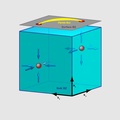Template:Selected anniversaries/November 9: Difference between revisions
No edit summary |
No edit summary |
||
| Line 24: | Line 24: | ||
||1906: Arthur Louis Hugo Rudolph born ... rocket engineer who was a leader of the effort to develop the V-2 rocket for Nazi Germany. After the war, the United States Government's Office of Strategic Services (OSS) brought him to the U.S. as part of the clandestine Operation Paperclip, where he became one of the main developers of the U.S. space program. He worked within the U.S. Army and NASA, where he managed the development of several systems, including the Pershing missile and the Saturn V Moon rocket. Pic. | ||1906: Arthur Louis Hugo Rudolph born ... rocket engineer who was a leader of the effort to develop the V-2 rocket for Nazi Germany. After the war, the United States Government's Office of Strategic Services (OSS) brought him to the U.S. as part of the clandestine Operation Paperclip, where he became one of the main developers of the U.S. space program. He worked within the U.S. Army and NASA, where he managed the development of several systems, including the Pershing missile and the Saturn V Moon rocket. Pic. | ||
File:Philip G. Hodge.jpg|link=Philip G. Hodge (nonfiction)|1920: Materials engineer and academic [[Philip G. Hodge (nonfiction)|Philip G. Hodge]] born. He will study the mechanics of elastic and plastic behavior of materials, contributing to plasticity theory including developments in the method of characteristics, limit-analysis, piecewise linear isotropic plasticity, and nonlinear programming applications. | |||
||1922: Richard K. Lashof born ... American mathematician. He contributed to the field of geometric and differential topology, working with Shiing-Shen Chern, Stephen Smale, among others. Pic. | ||1922: Richard K. Lashof born ... American mathematician. He contributed to the field of geometric and differential topology, working with Shiing-Shen Chern, Stephen Smale, among others. Pic. | ||
Revision as of 12:50, 10 November 2018
1885: Mathematician, physicist, and philosopher Hermann Weyl born. He will be one of the most influential mathematicians of the twentieth century: his research will have major significance for theoretical physics as well as purely mathematical disciplines including number theory.
1920: Materials engineer and academic Philip G. Hodge born. He will study the mechanics of elastic and plastic behavior of materials, contributing to plasticity theory including developments in the method of characteristics, limit-analysis, piecewise linear isotropic plasticity, and nonlinear programming applications.
1922: Mathematician, philosopher, and academic Imre Lakatos born. He will be known for his thesis of the fallibility of mathematics and its 'methodology of proofs and refutations' in its pre-axiomatic stages of development.
2005: The Venus Express mission of the European Space Agency is launched from the Baikonur Cosmodrome in Kazakhstan.
2017: First use of Weyl semimetal crystals as a quantum time machine which detects and prevents crimes against mathematical constants.




